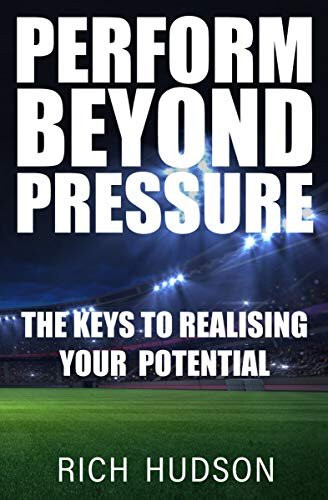Perform Beyond Pressure is a book about sporting performance by Rich Hudson. It’s an enjoyable read and I recommend every coach picks up a copy, especially if you work with players who feel the pressure of big game situations. It’s certainly helpful.
The underlying premise is based on an “inside out” view of the world. The theory is we create meaning and pressure in our own minds. We think there is pressure in big games because there is more on it; reputation, pride, possibly money. Players and coaches think they are defined by how well they do. But that pressure is not in the world, it’s in the mind and projected onto events.
Once we realise this, the book goes on, we can let go of the pressure, just play one ball at a time and enjoy it whatever the outcomes. Performance isn’t what you are, it’s what you do.
The book then talks about how this freedom from self-built pressure leads to access to your instincts, a focus on improvement over results and naturally better performances.
This sounds magical, but how do we know if it is correct?
This is perhaps the biggest concern about the central argument. It assumes meaning is applied to the environment by the humans who are there. We receive input from the environment, apply meaning to it and behaviour pops out as a response. Animals cannot do this so they are all instinct. However, it is far from clear this is true.
There is an alternative view, studied by anthropologist Tim Ingold, that says meaning happens in an interaction between the environment and all living things within it. Ingold argues that thinking is only possible because we exist in the environment. We are the environment, just like everything else within it, not above it. Thought is not something that exists outside of the world in a theoretical “mind”. As a result, thinking and meaning is not reserved for humans, Humans are simply the only creatures that can narrate their experience.
By this perspective the world is not inside-out. Pressure is something that exists in more than individual humans. There is no mind external to the environment. The advice to let go of thinking becomes impossible to follow: You may as well say “don’t exist in the world” or “don’t have a body”.
However, even if the book may be underpinned by a flawed assumption (and it may not, depending on your perspective), many of the recommendations can still be applied by coaches and players.
You don’t need to feel good to play well (and you don’t need to play well to feel good).
Focus on the process of mastering skills rather than outcomes like wins and trophies.
Learn how to get unhelpful thinking out the way and trust your instincts.
Accept that you are not your thoughts or feeling and you have a choice of how you behave.
As far as I am aware, none of these ideas depend on an inside-out underpinning.
A second critique of the book is related. The book argues that running on instinct is the preferable state. While it often is, it isn’t always true.
Now, Perform Beyond Pressure, does not totally throw away reflection. It talks about learning from mistakes in the drive towards mastery. This is great advice. However, it may be difficult for some to put into action if they are coming at it from a framing device that says meaning is self-created.
Despite some personal reservations, Perform Beyond Pressure is a well argued and accessible book with plenty of practical advice for coaches and players alike to frame their performance. I recommend it if you are looking for a way to play and coach better cricket, while also meditating on some deeper aspects of how you frame your sporting experiences.
